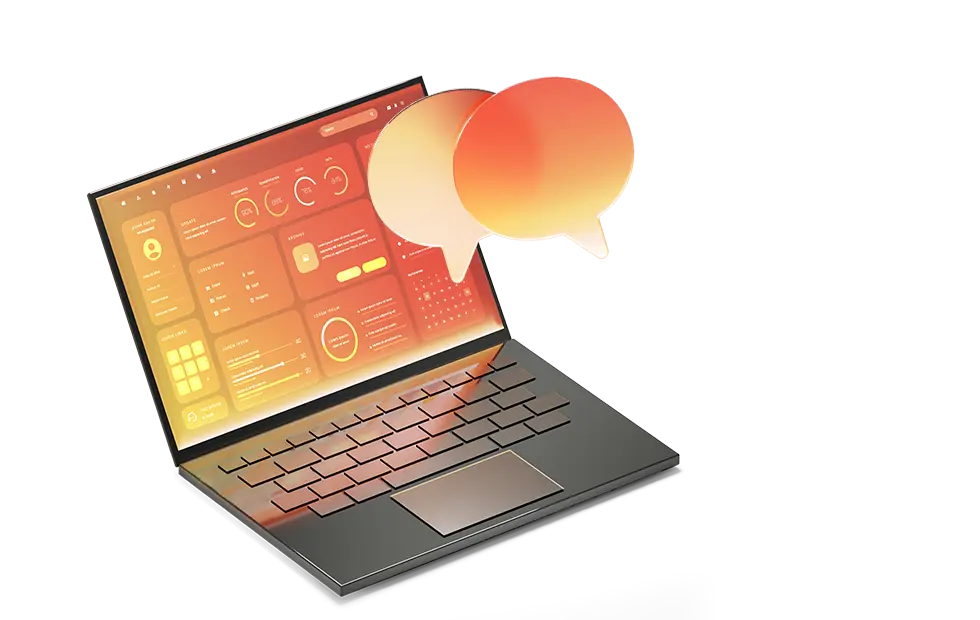
Modernize Your Operations with VoIP Telecom Solutions
Make collaboration easier between clients and employees with Tigunia’s flexible business communications solutions.

Enhance Performance and Employee Productivity
Your people need the ability to effectively gather and share knowledge within their workspace. With Tigunia by your side, we can help determine what business communications solutions will best fit your needs and budget. Our goal is to make your team more productive in the long-run through enterprise collaboration, messaging, email, video conferencing, and voice hardware.

Get Your Complete Guide to Microsoft Dynamics 365 Business Central
From functionality and licensing to customization and pricing, take a deep dive into the revolutionary cloud business management solution that seamlessly scales with your growth and ties all your operations together.
Download WhitepaperBusiness Communication and VoIP Solutions That Fit Your Budget
It’s time to say goodbye to the traditional phone line and go digital with Voice over IP (VoIP). By communicating through voice and data transmission, you get more flexibility, more functionality – and cheaper call rates! Tigunia offers VoIP provider selection, setup, maintenance, and ongoing support to all our clients.
Key features include:
Auto-Attendant
Greet callers with a recorded message with menu options to direct their call to the appropriate department or extension.
Business Text Messaging
Send text notifications to customers, or update your team using digital messaging.
Call Routing and Forwarding
Ensure calls are directed to the right person using predefined rules or time schedules, or forward incoming calls to other devices or numbers.
External Software Integration
Streamline workflows with integration between customer relationship management (CRM) software, productivity tools, and other business systems.
Voice and Video Calls
Make and receive voice and videos including call screening, recording, queuing, analytics, and video conferencing over a secure internet connection.
Your Local VoIP Solutions Provider
Embrace the power of VoIP for seamless digital business communication and enhanced collaboration with Tigunia! We have the manpower to design, program, and install any and every communication device your business requires. We have the tools and software to meet all your voice, video, messaging, and conferencing needs. And we have a vast knowledge of vendors, solutions, and environments to fit your needs.

Meet Our VolP Solutions Partners

3CX Phone System is a software-based IP PBX for Windows and Linux which replaces traditional business PBX telephone systems. It is based on the SIP standard and supports standard SIP software and hardware phones. It allows calls to be made via an internet-based VOIP service provider or via the traditional public telephone network. Easy to install and configure, it includes a web-based configuration interface, voice mail, auto attendant, call hunting and other features.

8×8, Inc. offers voice, video and mobile IP communications solutions. These solutions, based on internally developed, patented technologies, leverage existing broadband Internet connections and cellular networks to deliver advanced features and digital quality phone service at a fraction of the cost of legacy, copper wire alternatives.

Grandstream Networks is a manufacturer of IP voice and video communications equipment, gateways, and analog telephone adapters. Grandstream supplies small and medium businesses and consumers with open-standard SIP-based products.

Enable calls from your Microsoft Teams app to and from landlines and mobile phones on the PSTN. Teams Phone provide a cloud-based phone system in Teams with features such as hold, blind and safe transfers, and reporting features for professionals who manage calling solutions.

VOIPTools SUPERCHARGES your 3CX phone system with more than 30 addons. Wallboards, dialers, recording management, on-call services, emergency notifications, overhead paging, reporting data and much more is included in one universal license making it one tool to rule them all.

Yealink is a global-leading provider of Unified Communication & Collaboration Solutions specialized in video conferencing, voice communications, and collaboration, dedicated to helping every person and organization embrace the power of “Easy Collaboration, High Productivity”.
Book A Demo
